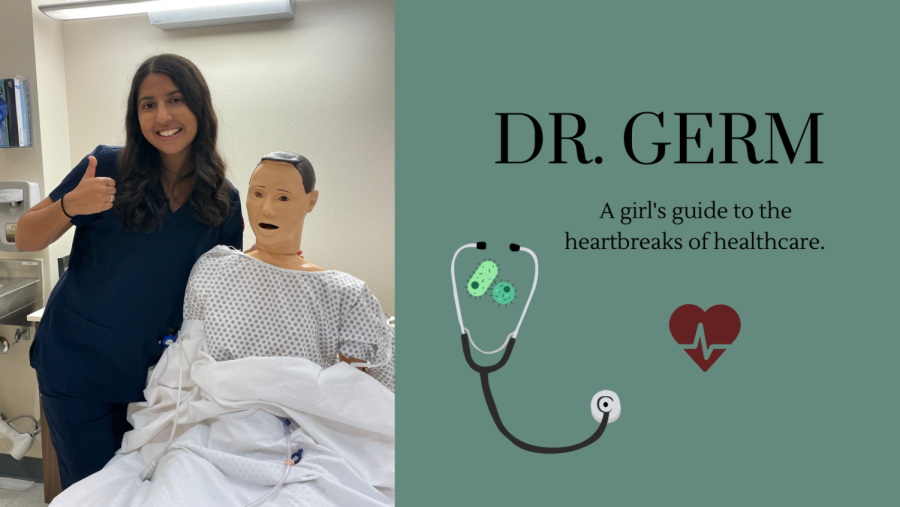In this weekly blog, staff reporter Shannon Christian writes about the myths of healthcare and how it impacts students.
Dr. Germ: professionals in practice
As I’ve begun to rotate through multiple hospitals, I’ve noticed that each day, each experience is vastly different than the previous. Not just in terms of patients, or what cases I see, but based on the different medical professionals I follow, or encounter.
Depending on the hospital, each floor will usually have its own care team that focuses on the specialty of the floor. This can be divided into departments such as emergency, day surgery, or even women’s services. Each department will then have a staff of Registered Nurses (RNs), Patient Care Technicians (PCTs), doctors, nurse practitioners, and physical or occupational therapists.
Each position in a care team is vital to a patient’s recovery, but the way that each care team interacts is based on the individuals within it. My first day on a medical-surgical floor I had followed an RN that was caring for four patients. This was unusual to me because the floor was full, so I had expected to visit every room. For that floor, however, the nurses had divided up patients since the cases in medical-surgical were usually non-emergent.
In the ICU, or intensive care unit, the nurses on the floor would usually only have two to three patients since these patients were in more critical conditions requiring more complex care. The RN that I had followed on the Intensive Care Unit had two patients that required oxygen, and one that was intubated; both requiring constant monitoring.
I found that on the ICU floor, the nurses were constantly monitoring the conditions of the critical patients, and they were more inclusive in describing the course of treatment. I was able to watch an intubation and a nasogastric tube insertion, all while the RN described the procedure to me and asked if I had questions. On other floors, however, such as medical-surgical, and postoperative, I was mostly helping out in non-clinical ways: getting water and ice chips, making stretchers, or fetching supplies for each room. These experiences were less involved in clinical treatment, and I found that I was not learning as much during this time as it was mainly an in-and-out ordeal for patient rooms.
Each experience I’ve had in each hospital has been incredible, and I look forward to spending three hours in a clinical environment every other day. These experiences, however, vary greatly from each other based on the care team I follow, and the involvement of the staff, such as RNs. I’ve learned that a lot of clinical expertise can be derived from observing procedures with a RN who is willing to describe the clinical situation.
